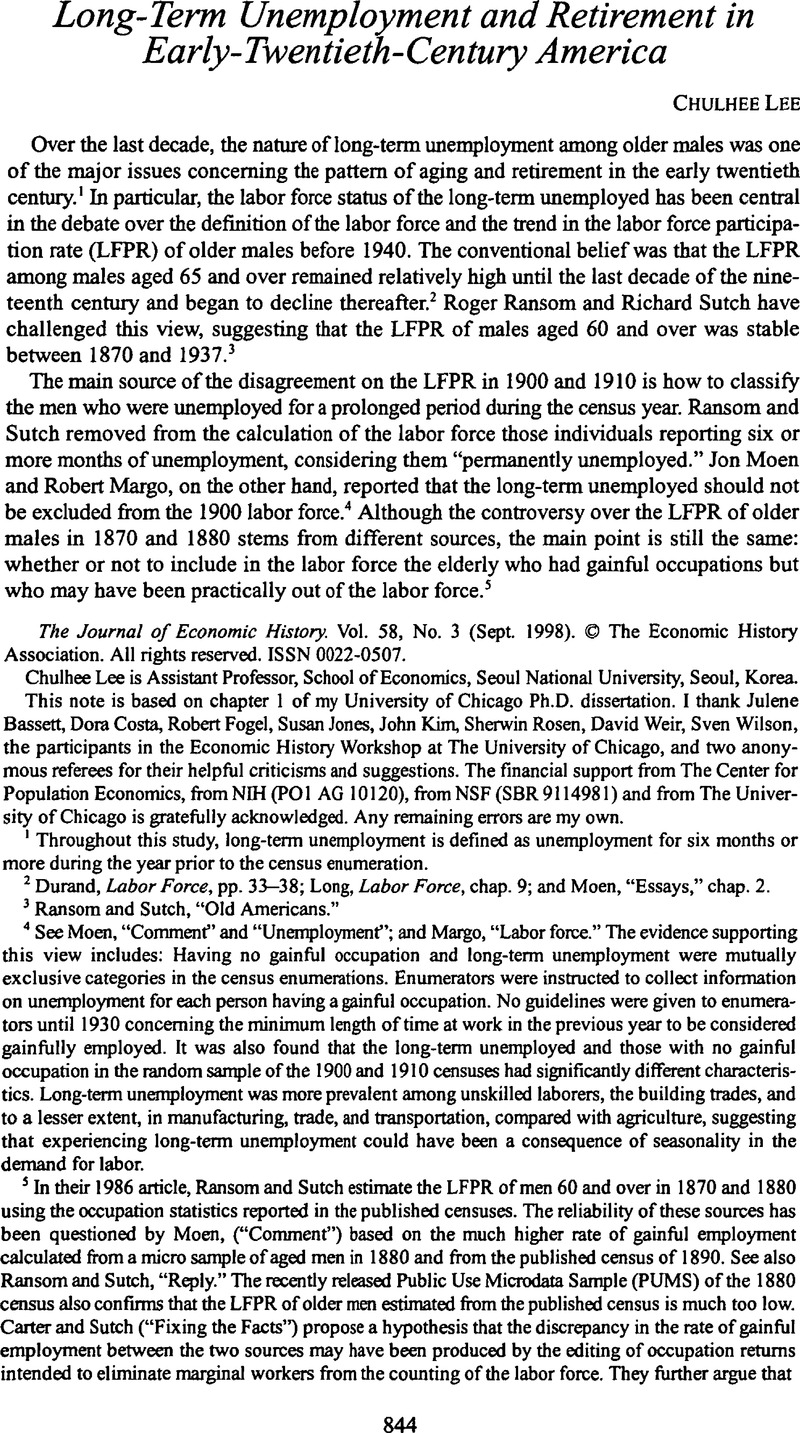Crossref Citations
This article has been cited by the following publications. This list is generated based on data provided by Crossref.
Lee, Chulhee
1999.
Farm Value and Retirement of Farm Owners in Early-Twentieth-Century America.
Explorations in Economic History,
Vol. 36,
Issue. 4,
p.
387.
Lee, Chulhee
2005.
Labor Market Status of Older Males in the United States, 1880-1940.
Social Science History,
Vol. 29,
Issue. 1,
p.
77.
Lee, Chulhee
2007.
Long‐Term Changes in the Economic Activity of Older Males in Korea.
Economic Development and Cultural Change,
Vol. 56,
Issue. 1,
p.
99.
Lee, Chulhee
2015.
Industrial Characteristics and Employment of Older Manufacturing Workers in the Early-Twentieth-Century United States.
Social Science History,
Vol. 39,
Issue. 4,
p.
551.
Costa, Dora L.
DeSomer, Heather
Hanss, Eric
Roudiez, Christopher
Wilson, Sven E.
and
Yetter, Noelle
2017.
Union Army veterans, all grown up.
Historical Methods: A Journal of Quantitative and Interdisciplinary History,
Vol. 50,
Issue. 2,
p.
79.



